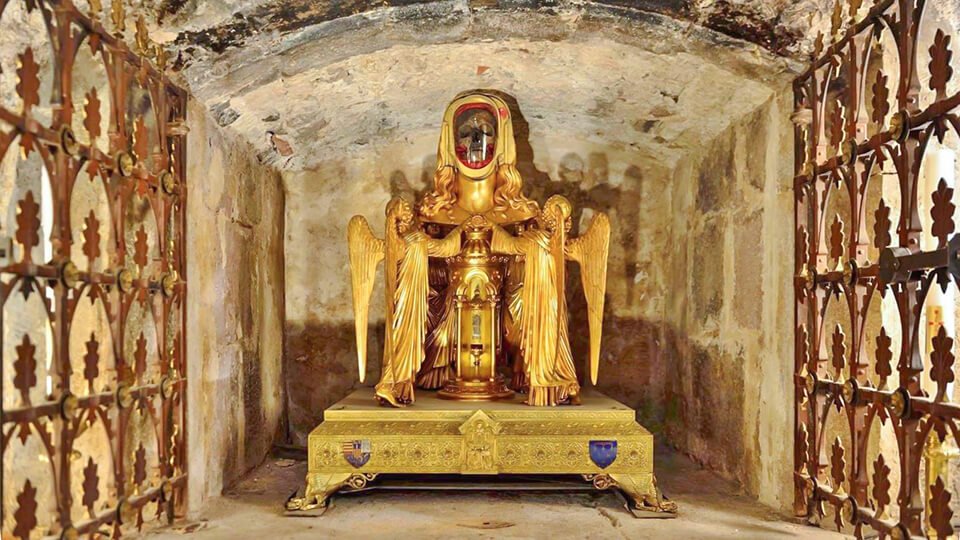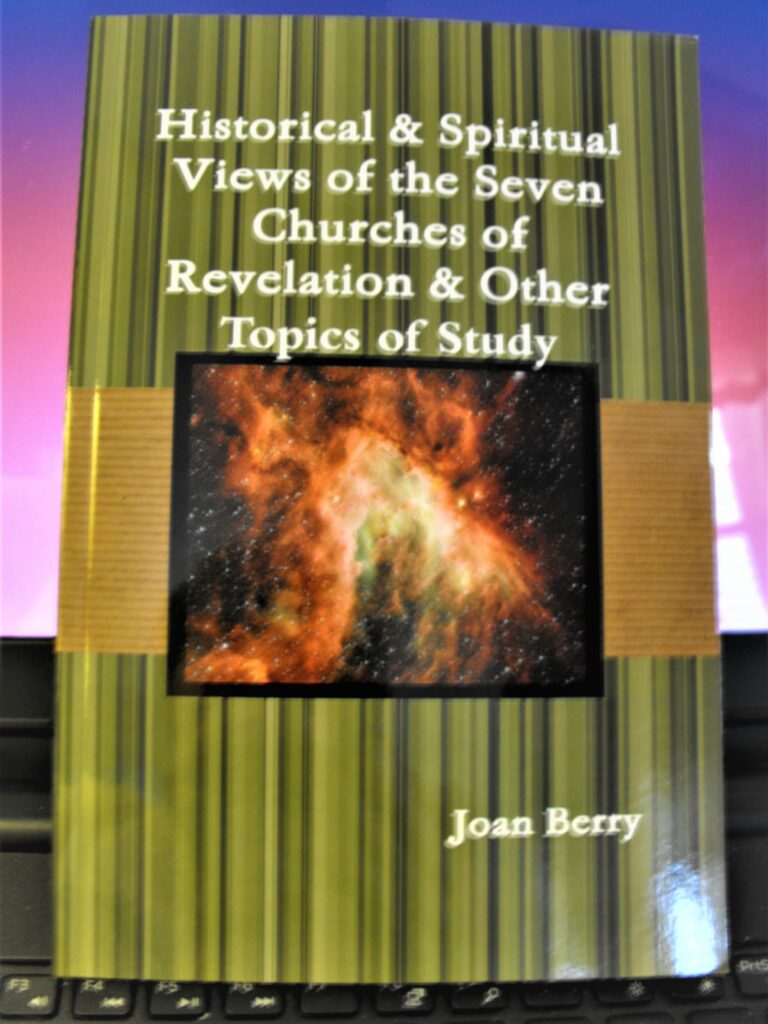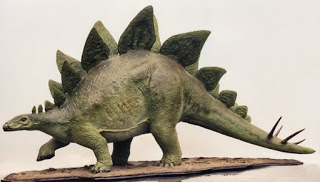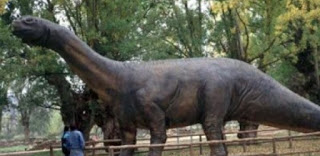Simon Magas Lives on and not Forgotten
Copyright 2021 by Joan Berry
Returning briefly to the time of Constantine, further information is needful. His huge basilica was built over an area known as Vaticanum where the grave of Simon Magus existed. In those days where a temple was situated became holy ground. Old temples were completely covered over and new ones were built over the old site. However, in this case, the holy place was the tomb of Simon Magas that was of pagan architecture and no visible Christian elements. It also featured shelves on which idols rested. Furthermore, Constantine did not disturb the memorial that covered the grave. Instead, he had the basilica erected over it with the grave directly beneath the high altar. At this point, the bones of Simon Peter and Paul bones were added to the gravesite as discussed in Part II. Also discussed in Part II was the information that Pope Vitalian sent the bones of the apostles, in 656 CE, to King Owsy of Britain.
Moving forward to the 16th century, Constantine’s basilica in Rome had fallen into great disrepair and was demolished. It would take more than a century to complete the construction of its replacement. The new basilica was much larger and grander to the point of majestic. It stands today as St, Peter’s in Vatican City. During the construction of St. Peter’s, there was no intrusion of the graves under the high altar and they remained accessible.
Simon Magas entered the modern world in 1939 as a result of the death of Pope Pius IV. There was no room for the pope’s interment beneath the church’s central aisle and renovations had to be made. Not long after the pope’s burial, the decision was made to create an underground chapel as part of the renovations. During the excavation, workers uncovered graves from the 3rd and 2nd centuries. As they approached the high alter level, bones that later proved to be from the first century were discovered. The workers believed they found the remains of the apostle, Simon Peter. However, the bones proved to be from the 4th century.
As the excavation continued, the workers discovered a slab covering a grave. They removed the slab expecting to see more bones, but the pit looked empty. The excavation foreman jumped into the pit and found a chamber with four-foot sides and a dirt floor. He cleared enough debris away from a small opening until a large gap was exposed. He and Monsignor Kass, who was assigned to care for the bones from the excavation, could peer inside. They could see bones and the foreman carefully removed them along with some clinging debris. They placed them in a box for safekeeping. The contents were later described as shreds of purple cloth with gold threads, a few coins, and bones.
We move ahead again several years when this same box was found in a Vatican storeroom and given to Professor Correnti to examine and to evaluate. He noted that the cloth was purple with gold thread; the skeleton was from the first century; the skeleton was complete except for the ankles and feet and that the leg bones had been injured. The professor described the remains as being that of a tall man of heavy stature; about the age of Simon Magus; and further examination showed that the body had been taken from the ground and wrapped in a purple gold-threaded material.
In 1964, the University of Rome compared soil samples from the basilica’s central grave and the courtyard in front of Simon Magus’memorail. The conclusion reached revealed that the soil matched the soil scraped from the bones and was not the type found on Vatican Hill. With that result, it was considered proof that the bones were those of Simon Magas.
In 1968, Pope Paul VI announced that the bones of St. Peter, the apostle, had been found and identified. He went on to tell about how the bones had been discovered among the ancient structures beneath the basilica. And then, went into the detail of the studies, further declaring their accuracy. The day after announcement, the bones were placed in the empty chamber beneath the high altar. And if that was not enough, the chamber had a small opening where privileged people could see the bones in transparent containers. They saw the bones of Simon Magas. His bones were returned to their intended place beneath the high altar where the pagan Constantine wanted them to be. Remember, the bones of the true apostle Simon Peter had been resting in Britain’s Canterbury Cathedral since 656CE.
Next week: Part IV: The Catholic Church Accepts Simon Magas’ Teachings.
Sources:
Bebe’s Ecclesiastical History of the English Nation. (731). Bebe, priest and, historian. England.
Berry, V. J. (2016). Why Historical Phenomena Instigates Resistance to Female Clergy. ISBN 978-1-365-40463-4.
Berry
Bible Gateway.com (n.d.). https://w.w.w.biblegateway.com
Carriere, J. (1977). The Gnostics. E. P. Dutton. New York; NY; Peter Owen Pub.2014.
Cave, W. (1840). The Lives of the Apostles…London, Eng. Oxford by J. Vincent.
Britannica, T. Editors of Encyclopaedia (2020, May 6). Simon Magus. Encyclopedia Britannica. https://www.britannica.com/biography/Simon-Magus
Duck, Daymond R. (1998). Revelation: God’s Word for the Biblical Inept. Lancaster PA. Starburst Publishers.
Fletcher, I. V. (1984). The Incredible History of God’s Church . . . Altadena CA. Triumph Publishing Co.
Holy Bible From the Ancient Eastern Text. (1957). Lamsa, George M. Trans,). From the Aramaic of the Peshitta. Harper, San Francisco.
Hunt, D. (1994). A Woman Rides the Beast. Eugene OR: Harvest House Pub.
Jameson, A. (1857). Sacred and Legendary Art. London Eng.: Longman, Brown, Green Pub.
Josephus: The Complete Works. (1998). Whiston, William, Trans.). Nashville TN. Thomas Nelson Publishers.
Life Application New Testament Commentary. (2011). Barton, Bruce et al. Wheaton IL. Tyndale Publishers.
Martin, E. L. & Keyser, J.D. Simon Magus and the origin of the Catholic Church (n.d.). w.w.w.hope-of-isreal.org
McGraph, Alister. (2011). Christian Theology 5th ed. Kings College. London UK. Wiley-Blackwell Publishers.
New King James Study Bible. (2007). Radmacher, Earl D. general editor. Nashville TN. Harper.
Newman, D. (1685). The Lives and Deaths of the Holy Apostles. Ann Arbor MI, London Eng.; University of Michigan microfilm.
Olson, G. (1986). The Apostasy of the Last Century. Nordica S. F. Ltd. Hong Kong, China.
Rome into 10 Parts; Divisions of the West. (2014). Amazing Bible Timelines with World History.
The Amplified Bible. (1987). Grand Rapids MI. Zondervan House publishers.
The Apologetics Study Bible: Cristian Standard Bible. (2017). Cabal, Ted, general editor. Nashville TN. Holman Bible Publishers.
The Christian Theology Reader 4th ed. (2011). McGrath, Alister, ed. Kings College, London UK. Wiley-Blackwell.
Walsh, J. E. (2013). The Bones of St. Peter. Manchester NH. Sophia Institute Press
Bible references:
Acts 8: 9-21; 1: 23-26
II Thess. 2: 7
Matt. 10: 5-6
John 4: 9, 12
Rev. 2: 9; 3: 9; 2: 2; 2:20
I Kings 16: 31 Jezebel
I Kings 12: 28-30
II Kings 17: 24-41
II Chron. 11: 14
Num. 23; 22: 4-5 Peter temple
Deut. 23: 4
Part III
Simon Magas Lives on and not Forgotten
Copyright 2021 by Joan Berry
Returning briefly to the time of Constantine, further information is needful. His huge basilica was built over an area known as Vaticanum where the grave of Simon Magus existed. In those days where a temple was situated became holy ground. Old temples were completely covered over and new ones were built over the old site. However, in this case, the holy place was the tomb of Simon Magas that was of pagan architecture and no visible Christian elements. It also featured shelves on which idols rested. Furthermore, Constantine did not disturb the memorial that covered the grave. Instead, he had the basilica erected over it with the grave directly beneath the high altar. At this point, the bones of Simon Peter and Paul bones were added to the gravesite as discussed in Part II. Also discussed in Part II was the information that Pope Vitalian sent the bones of the apostles, in 656 CE, to King Owsy of Britain.
Moving forward to the 16th century, Constantine’s basilica in Rome had fallen into great disrepair and was demolished. It would take more than a century to complete the construction of its replacement. The new basilica was much larger and grander to the point of majestic. It stands today as St, Peter’s in Vatican City. During the construction of St. Peter’s, there was no intrusion of the graves under the high altar and they remained accessible.
Simon Magas entered the modern world in 1939 as a result of the death of Pope Pius IV. There was no room for the pope’s interment beneath the church’s central aisle and renovations had to be made. Not long after the pope’s burial, the decision was made to create an underground chapel as part of the renovations. During the excavation, workers uncovered graves from the 3rd and 2nd centuries. As they approached the high alter level, bones that later proved to be from the first century were discovered. The workers believed they found the remains of the apostle, Simon Peter. However, the bones proved to be from the 4th century.
As the excavation continued, the workers discovered a slab covering a grave. They removed the slab expecting to see more bones, but the pit looked empty. The excavation foreman jumped into the pit and found a chamber with four-foot sides and a dirt floor. He cleared enough debris away from a small opening until a large gap was exposed. He and Monsignor Kass, who was assigned to care for the bones from the excavation, could peer inside. They could see bones and the foreman carefully removed them along with some clinging debris. They placed them in a box for safekeeping. The contents were later described as shreds of purple cloth with gold threads, a few coins, and bones.
We move ahead again several years when this same box was found in a Vatican storeroom and given to Professor Correnti to examine and to evaluate. He noted that the cloth was purple with gold thread; the skeleton was from the first century; the skeleton was complete except for the ankles and feet and that the leg bones had been injured. The professor described the remains as being that of a tall man of heavy stature; about the age of Simon Magus; and further examination showed that the body had been taken from the ground and wrapped in a purple gold-threaded material.
In 1964, the University of Rome compared soil samples from the basilica’s central grave and the courtyard in front of Simon Magus’memorail. The conclusion reached revealed that the soil matched the soil scraped from the bones and was not the type found on Vatican Hill. With that result, it was considered proof that the bones were those of Simon Magas.
In 1968, Pope Paul VI announced that the bones of St. Peter, the apostle, had been found and identified. He went on to tell about how the bones had been discovered among the ancient structures beneath the basilica. And then, went into the detail of the studies, further declaring their accuracy. The day after announcement, the bones were placed in the empty chamber beneath the high altar. And if that was not enough, the chamber had a small opening where privileged people could see the bones in transparent containers. They saw the bones of Simon Magas. His bones were returned to their intended place beneath the high altar where the pagan Constantine wanted them to be. Remember, the bones of the true apostle Simon Peter had been resting in Britain’s Canterbury Cathedral since 656CE.
Next week: Part IV: The Catholic Church Accepts Simon Magas’ Teachings.
Sources:
Bebe’s Ecclesiastical History of the English Nation. (731). Bebe, priest and, historian. England.
Berry, V. J. (2016). Why Historical Phenomena Instigates Resistance to Female Clergy. ISBN 978-1-365-40463-4.
Berry
Bible Gateway.com (n.d.). https://w.w.w.biblegateway.com
Carriere, J. (1977). The Gnostics. E. P. Dutton. New York; NY; Peter Owen Pub.2014.
Cave, W. (1840). The Lives of the Apostles…London, Eng. Oxford by J. Vincent.
Britannica, T. Editors of Encyclopaedia (2020, May 6). Simon Magus. Encyclopedia Britannica. https://www.britannica.com/biography/Simon-Magus
Duck, Daymond R. (1998). Revelation: God’s Word for the Biblical Inept. Lancaster PA. Starburst Publishers.
Fletcher, I. V. (1984). The Incredible History of God’s Church . . . Altadena CA. Triumph Publishing Co.
Holy Bible From the Ancient Eastern Text. (1957). Lamsa, George M. Trans,). From the Aramaic of the Peshitta. Harper, San Francisco.
Hunt, D. (1994). A Woman Rides the Beast. Eugene OR: Harvest House Pub.
Jameson, A. (1857). Sacred and Legendary Art. London Eng.: Longman, Brown, Green Pub.
Josephus: The Complete Works. (1998). Whiston, William, Trans.). Nashville TN. Thomas Nelson Publishers.
Life Application New Testament Commentary. (2011). Barton, Bruce et al. Wheaton IL. Tyndale Publishers.
Martin, E. L. & Keyser, J.D. Simon Magus and the origin of the Catholic Church (n.d.). w.w.w.hope-of-isreal.org
McGraph, Alister. (2011). Christian Theology 5th ed. Kings College. London UK. Wiley-Blackwell Publishers.
New King James Study Bible. (2007). Radmacher, Earl D. general editor. Nashville TN. Harper.
Newman, D. (1685). The Lives and Deaths of the Holy Apostles. Ann Arbor MI, London Eng.; University of Michigan microfilm.
Olson, G. (1986). The Apostasy of the Last Century. Nordica S. F. Ltd. Hong Kong, China.
Rome into 10 Parts; Divisions of the West. (2014). Amazing Bible Timelines with World History.
The Amplified Bible. (1987). Grand Rapids MI. Zondervan House publishers.
The Apologetics Study Bible: Cristian Standard Bible. (2017). Cabal, Ted, general editor. Nashville TN. Holman Bible Publishers.
The Christian Theology Reader 4th ed. (2011). McGrath, Alister, ed. Kings College, London UK. Wiley-Blackwell.
Walsh, J. E. (2013). The Bones of St. Peter. Manchester NH. Sophia Institute Press
Bible references:
Acts 8: 9-21; 1: 23-26
II Thess. 2: 7
Matt. 10: 5-6
John 4: 9, 12
Rev. 2: 9; 3: 9; 2: 2; 2:20
I Kings 16: 31 Jezebel
I Kings 12: 28-30
II Kings 17: 24-41
II Chron. 11: 14
Num. 23; 22: 4-5 Peter temple
Deut. 23: 4






